|
Pablo Picasso
When I first saw Italy-born and now after various international locations Toronto-based — his Parkdale studio is actually just down the street from the BME offices — tattoo artist Fabrizio Divari’s work (www.divariart.com), I was struck that he appeared to be an artist in the traditional sense of the word first, and a tattoo practitioner second — it’s been my experience that it tends to be the other way around with tattoo artists. We recently had a chance to talked about both art and tattoos. Paintings by Fabrizio Divari * * * BME: Have you always been interested in art? How did you get into tattooing? I’ve been wanting to be an artist since as early as I can recall. I was born in Rome and grew up between Bologna and Milan, where the artistic and cultural richness that surrounded me all the time was certainly overwhelming. Everywhere you glance, you see art and beauty: in the shape of architecture, visual art, even the natural landscape. This doesn’t mean of course that everybody in Italy is an artist. I guess I was gifted — or condemned — since birth with a certain type of sensitivity and a very deep appeal for what we define as art. Since childhood I was especially mesmerized by paintings, and I started scribbling and sketching as a natural response to my environment. My first contact with tattooing was totally accidental. While traveling through Spain one summer in the early nineties I bumped into this guy who was tattooing himself on a beach, sat with him, and immediately wanted to try it myself. We’re talking about three sewing needles wrapped together with a string of cotton and some Pelican ink — every poke became one black dot. When I got back to my seven or eight friends at the campground where we were staying I pretty much tattooed all of them with very simple symbols taken from an old record by the “Cult”. Every song was a different sign and they all got them — me too of course — with not a trace of meaning for any of us. We were teenagers, all we cared for was to rebel in any possible way and this was just another sweet deal. However, once I was back in Milan, I actually started to get very interested in the process and tattoos as form of expression: I built my first machines using metal pens and a small tape recorder’s engine. I remember I didn’t even have a switch so to get the power — a really high power — on and off. I had to plug and unplug the cable to the wall! At the time, Milan, and the south of Europe in general, was not really progressive in this field. Tattooing was a shady, underground activity perpetuated by an ignorant elite whose only claim was that they traveled a bit here and there. Because of this, and despite the fact that none of them had any artistic skill, they were acting like Hollywood stars and were very careful to not let the secrets of the trade leak out. It took quite a lot of investigating and asking to get the basic keys that I would practice on myself, and again on my friends once back home. This painful process went on for a few years before I finally saw the possibility of making a future living of it. Slowly but inevitably I saw the potential of translating what I was already painting on canvas onto a different medium, one that would be in constant evolution, given the nature of the skin, and at the same time quite eternal. BME: What did your family think of your decision to become a tattoo artist? Ah! My family was quite horrified when they realized I was really undertaking this weird path — in conservative Italy it wasn’t even worth the name of “career” at the time. I doubt it is even today. Not to mention that my father used to be a high officer in the Navy — but not one prone at all to getting sailboats tattooed, as he was very disciplined. Sometimes I think I was adopted, for I can’t even pronounce this last word without panicking, haha. To their rescue though, I must admit that in the last few years they turned out to be incredibly supportive and very proud of me and the seriousness of my job. BME: How do people in general respond when they find out you’re a tattoo artist? I guess these days, here in Toronto, it’s certainly accepted. I never brag about it, ever. I’m reluctant to say what I do for living (unless being asked of course) and don’t really like to talk about tattooing outside my studio. And I hate when as soon as they know you’re an artist certain people suddenly go, “oh my god! I wanted to get a tattoo for so long.” Fuck it, why didn’t you? I’m sorry, but I really don’t care about those characters that need to be part of a conversation in any possible forced way… Not for me. BME: How do you grow as a tattoo artist, in terms of improving your craft? When I started in Milan it was almost a joke — it was difficult to get any help at all, but I did meet a few decent souls who directed me the right way. Then in 1999, I took off and moved to Costa Rica where I worked at the same time in the capital, San Jose, with good guys, and at a little studio that I opened on my own on the Pacific Coast. After two and half years of tropics I moved to Miami and then New York City. Everywhere I went I had my machines and worked with many different artists, some mediocre and others very talented. This exchange and cooperation is at the base of any improvement. BME: What advice would you give young tattoo artists, or people who want to become tattoo artists? Keep drawing day and night. This comes above of everything. You want to master completely the capacities of reproduction — and, therefore, creativity — of pretty much everything. Your specific direction, taste, and style will naturally occur with time, but before that stage, every artist should be above all a great illustrator, able to draw anything, and in any style. This sucks up a huge amount of time and energy but in my opinion it is the only way to go and become real. Nowadays, tattooing has become such a trendy thing and so profitable that most of the newcomers skip this altogether and jump into the craft without the slightest clue or talent. We see the results of it every day — I know I do, and I don’t particularly like doing cover ups. BME: I see that a lot of your tattoos are in the same style as your paintings? My favorite pieces to ink are my own paintings. Nothing makes me happier, proud and rewarded as when a client commissions a piece of my own art. Right after that comes Japanese themes, although I try always to give a little twist as far as coloring and detailing go. BME: Who are your least favorite clients? I don’t like the confused ones — those who are constantly undecided of what, where, and sometimes why… I can’t stand this. Thankfully, these types rarely contact me. Let’s say you want to get a tribal for instance — if you navigate through my gallery you won’t see a single one, so I’m not your man. On the other hand, you mostly see in it large pieces, fairly detailed, and rendered with rich, bright colors (either Japanese, or the cubist-like fashion I paint my canvases in), so if you’re looking for something like that you reach for me. Custom design is also a staple with me: when you walk into my studio you don’t see any flash on the wall — just my art, both on skin and canvas. I draw every piece from scratch (unless it’s a reproduction of a canvas by old Masters), starting from the client’s ideas and insights, but applying my personal touch and creativity till completion. BME: Do turn many people away? I don’t turn people away too often, although it happens of course. The only reason I do this is generally for artistic reasons. I guess I need to be captivated and challenged by the proposal in order to take you in — I have no fixed rules here. It can be anything really, although I do have preferences, but again seeing my gallery you know what I like to do and if you decide I’m your guy then generally you want something in these lines. Natural screening I suppose — can’t complain. I feel bad every time I say no though, for in a way I have the impression that I’m offending you or your ideas; that’s why I always apologize when this happens and try explaining my point of view as an artist. I must admit that in most cases these people are very appreciative of my honesty and regard my opinion as valuable. BME: How do you feel about the massive popularity of tattooing these days, and shows like “Miami Ink” that popularize them even more? I think shows like “Miami Ink” have definitely helped the “image” of tattoos overall. Getting tattooed is now much more publicly accepted and it’s not something taboo or misjudged. The majority of people who up until a while ago used to think about tattoos as necessarily linked with something shady or evil — jail, prostitution, drifters, drugs, and so on — accept it now, and at times get also excited about it. If you own a TV and had never been interested in tattoos, it’s now pretty much in your face and nobody can deny a deep sense of intrigue and mystery that this curious art inspires. People are now much less ignorant about tattooing and more cautious in searching and deciding if, what, and by whom, they will eventually get tattooed. In a way it’s sad that it took a massive corporate media to make tattoos be accepted and admired. On the downside, I think that in these shows they talk way too much about crap that I don’t care of — the stories behind the images — and far too little, if at all, about the technical process of tattooing, its history, and geography. I was actually offered by a producer client of mine to create a show right here in Toronto but I couldn’t do it. I’m a rather reserved artist and am reluctant to transform such a delicate art and relations I have with my clients into a circus for strangers. I like to think my integrity as an artist forbids me to sell what I reached in twelve years of experience to TV. BME: As a part of this mainstreaming I’m sure you’re happy though to see that tattoo artist is starting to be shown in galleries and treated as legitimate “art” though? Yes, I believe it is a great sign when you start seeing tattoo-related art showcasing in galleries. It means that finally it’s been recognized as a form of fine art, and in my opinion tattooing has legitimately earned a place among painting, sculpture, architecture, and such. What you see around now more and more often are tattoos that truly are pieces of art, and most significantly even is that often you can name the artist right away — this means that certain artists are in fact creating a “signature” style, something that is peculiar to their specific way of representing the art of tattooing. If you see a piece by Filip Leu, you don’t need to ask who’s the author of it, you just know it. And so Guy Aitchison, Shige, Bugs, Admiral, and many others including my friend Rob here in Toronto… and myself, hahaha. BME: Thanks for talking to us!
|

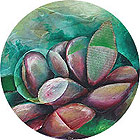
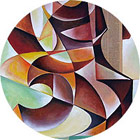
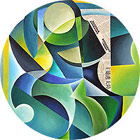
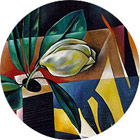
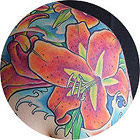
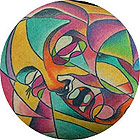
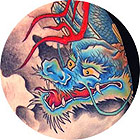


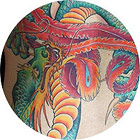
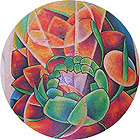
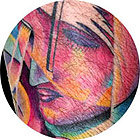
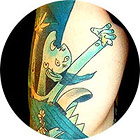


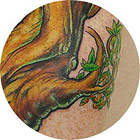

 BME/News and Modblog highlight only a small fraction of what BME has to offer. Take our free tour and subscribe to BME for access to over 3 million body modification related photos, videos, and stories.
BME/News and Modblog highlight only a small fraction of what BME has to offer. Take our free tour and subscribe to BME for access to over 3 million body modification related photos, videos, and stories.